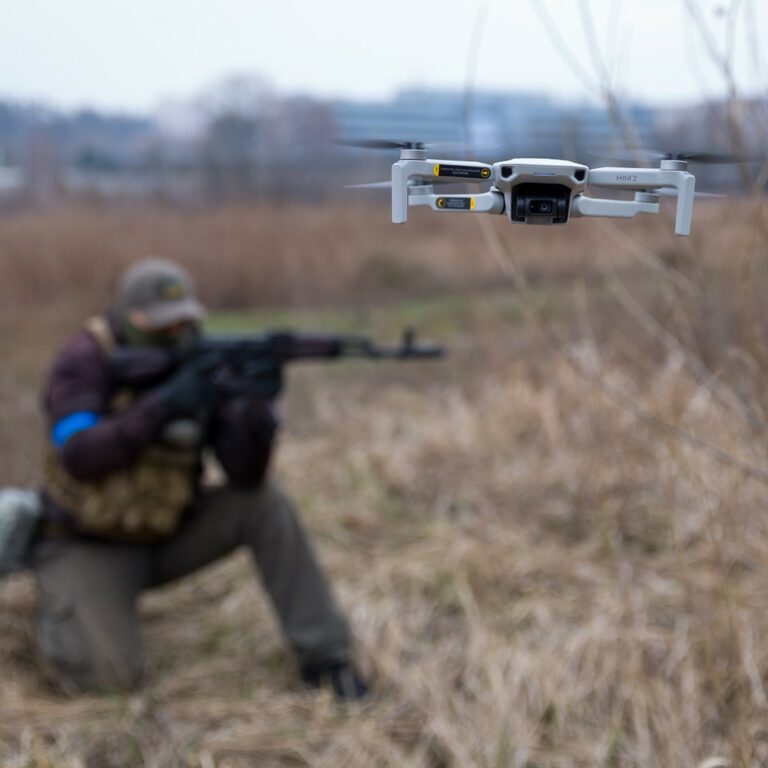
Aerial reconnaissance is an important component of warfare. Thanks to it, defenders survey and transmit information, destroy enemy targets, and most importantly, save the lives of not only military personnel but also civilians. In 2014, at the beginning of the Russia-Ukraine war, Ukrainian aerial reconnaissance was just developing — now it is a significant help to the Armed Forces of Ukraine because drones are like additional eyes for them.
CCurrently, the development of this military sphere is possible thanks to state investments, patrons, support of volunteers, and charitable foundations. The training of operators plays an exceptional role here, which is currently carried out mainly by volunteer organisations, in particular the Air Intelligence Support Centre.
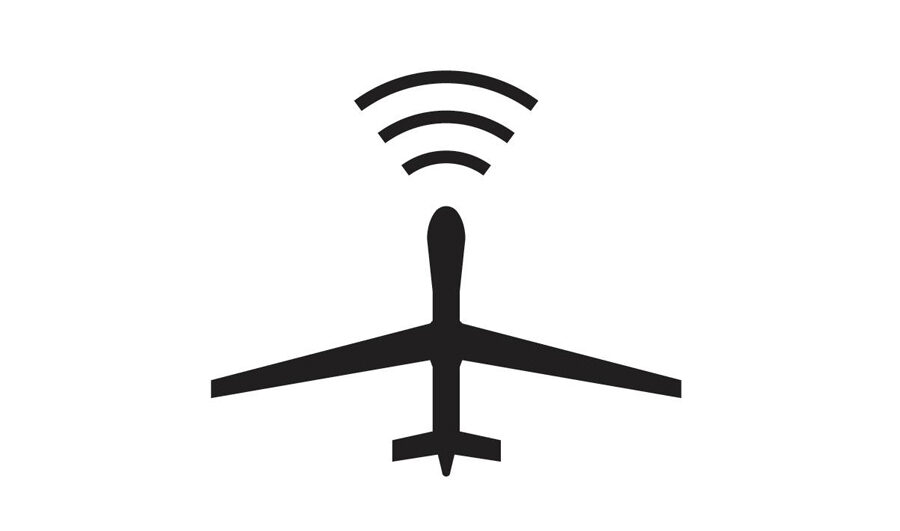
Aerial reconnaissance in Ukraine began with the use of small foam aeroplanes by the military — these were aircraft models for training. At the beginning of 2014, there were very few unmanned aerial vehicles (UAV) on the eastern front of Ukraine due to insufficient government funding and a lack of professional military operators who could operate the drones. In October 2014, on the initiative of volunteers, the first practical classes on aerial reconnaissance were held, and in January 2015, the Aerial Intelligence Support Centre was established. Since then, systematic training of unmanned aerial vehicle (UAV) operators has been underway.
Aerial reconnaissance launch in Ukraine
The main goal of the Centre is to provide the Ukrainian army with trained and equipped UAV pilots who can quickly provide up-to-date information about the actions of the enemy — hundreds of lives are saved, not only of Ukrainian soldiers but also the lives of civilians who are constantly terrorised by the Russian army. “Razom for Ukraine” volunteers help with the purchase, logistics and equipment delivery.

Maria Berlinska, Ukrainian military and public activist, founder of the Air Intelligence Support Centre volunteering organisation, explains why aerial reconnaissance is an essential part of warfare:
“Aerial reconnaissance can provide up to 90% of intelligence information. Therefore, it provides situational awareness that allows you to make quick decisions. And speed during war directly correlates with [saving] people’s lives. In English, there is a phrase, “a helicopter view” which is the opportunity to rise, evaluate, and quickly decide. This is what aerial reconnaissance provides.”
Maria has been part of air reconnaissance from the very beginning of the war in 2014. She went to the front and was ready to contribute to anything:
“If it would be necessary to bandage (to be a paramedic), I would bandage. If it would be necessary to peel potatoes for borshch, then potatoes for borshch. To drive IFV (infantry fighting vehicle), then to drive IFV. Specialists in the field of aerial reconnaissance were needed, it was just developing back then and this is a happy coincidence. The war gave me the sky. I do aerial reconnaissance because I believe in it. I know the effect (of it).”
Cadets during their studies at the Center take a theoretical course and learn to fly drones — multicopters (an aircraft with several propellers that are placed in the same plane and rotate diagonally in opposite directions) and gliders (an aircraft similar to an ordinary aeroplane). Furthermore, they practise UAV control basics in simulators and in real flights.
With the support and permanent partnership with the Kyiv-Mohyla Academy, free training, food, and accommodation for fighters in Kyiv have been organised. The Center’s team includes more than 10 teachers, instructors, and coordinators. The project partners are the volunteering initiatives “Army SOS“, “Aerorozvidka“, “Wings of the People’s Rear” among others.
Drones are expendable supplies for aerial reconnaissance. With the start of a full-scale war, the Ukrainian government, many businesses, charities, and volunteers help in providing the army with drones. In July 2022, the Ministry of Digital Transformation, the General Staff of the Armed Forces of Ukraine, and the State Service of Special Communications launched the “Army of Drones” project within the framework of which 472 aircraft were purchased at the end of August 2022 — some of them are already being used at the front.

A significant contribution to the development of aerial reconnaissance in Ukraine is also made by the team of the non-governmental organisation “Aerorozvidka“. It is working on the development and implementation of robotic military capabilities for the Security and Defense Forces of Ukraine. The organisation was founded in 2014 in order to help the Ukrainian military forces to defeat Russian invaders.
The Charity Foundation of competent assistance to the Ukrainian Armed Forces “Come Back Alive” also helps air scouts. Only in August 2022, the foundation’s team purchased 100 sets of quadcopters with the funds raised from benefactors; the cost of the lot is over UAH 14 million. Over the past six months, they purchased more than 3,000 drone aircrafts for the Armed Forces of Ukraine.

In addition to these organisations, aerial reconnaissance is supported by other charity foundations and projects that raise funds for drones (Charity Foundation of Serhiy Prytula, Charity Foundation of Andrii Khlyvniuk) or anti-drones, handguns that can be used to neutralise enemy drones (Antytila Charity Foundation).
Constant fundraising for drones from volunteers and native soldiers is something that has already become the norm for Ukrainians. Social networks have dozens of videos posted about this — fundraisers report on their successful collection, and the Ukrainian military forces delight Ukrainians with records of eliminated enemies or their positions. This constant and reliable support helps save lives and accelerate the victory of Ukraine.
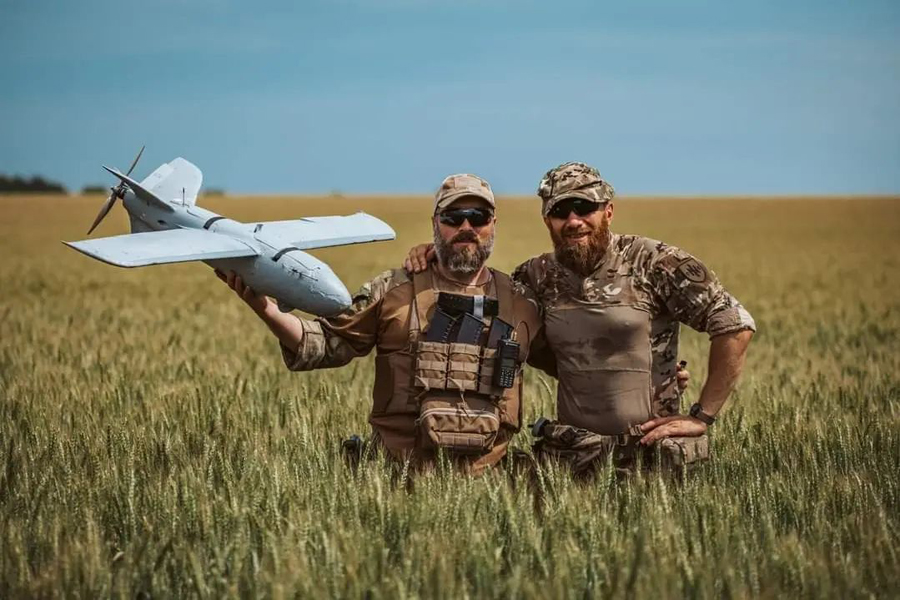
Every UAV is a drone, but not every drone is a UAV
Drones are the main help of aerial reconnaissance — it is any mobile unmanned vehicle pre-programmed to perform a specific task in the air, on land or underwater. Sometimes in the media they are confused with UAV. A drone is a broader concept and an unmanned aerial vehicle is only one of its types — a UAV can be considered as a drone, but not every drone is a UAV. The latter are divided into those that work according to the principle of an aeroplane, and those that fly according to the principle of a helicopter (quadrocopters).
Drones are intended for civilian use (civilian drones) and for military missions (military drones). Both of them are fast, safe, and have a high level of shot accuracy. The Ukrainian military uses both types of drones in the war with the Russian occupiers, because essentially any drone may perform combat missions. It works this way: a person who manages a drone quickly receives necessary information from the device with the help of special cameras and a data transmission channel. The operators of the “iron bird” do not need to be present in person in a potentially dangerous area — they can control the device remotely without exposing themselves to danger. It is important that most drones are capable of flying and gathering data when it is rainy, cloudy, foggy and dark.
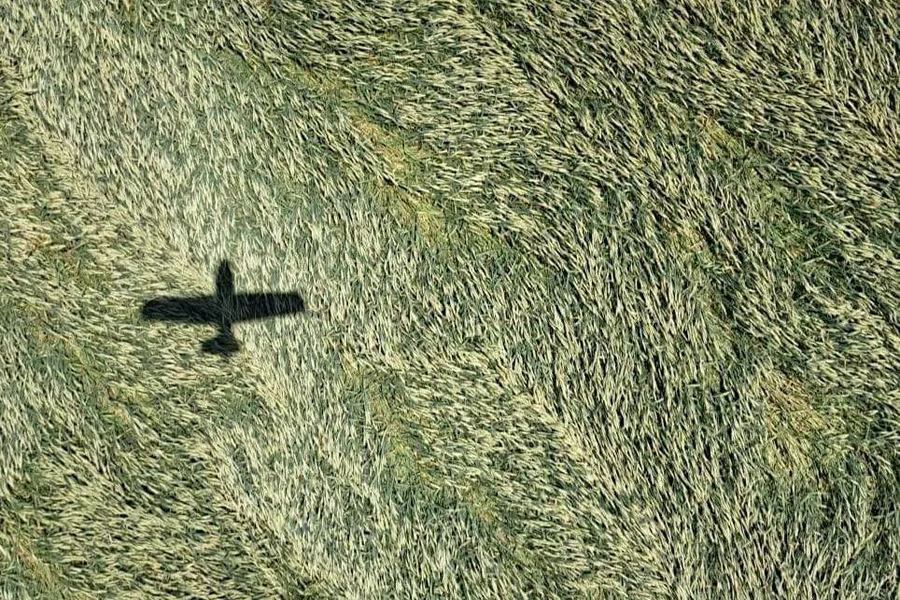
In today’s world drones can do almost anything, even deliver coffee. Since the beginning of martial law in Ukraine, civilians have been prohibited from launching drones. heir proper use helps save the lives of thousands of military and civilian people, says Maria:
The Prohibition of drones launch
Before the full-scale war, the resolution of the Cabinet of Ministers dated December 6, 2017 "On approval of the Regulation on the use of airspace of Ukraine" was in effect. The list of restrictions was expanded after the invasion.“When an evacuation from hospitals under shellfire is needed, you can raise a drone and show people in which direction it is safer to evacuate. When Russians are destroying oil refineries, you can appreciate the consequences of the tragedy. When residential buildings are shelled, you can see the scale of the fires. The drone also helps when it is necessary to monitor mobile towers.”
Currently, only representatives of the Armed Forces of Ukraine and special services are allowed to launch drones in Ukraine, while other people need to obtain a special permit. For example, agricultural entities should contact the military regional administration of their region.
“Birds” at the front and in the rear
UAVs help solve reconnaissance tasks as they are used to strike land and sea targets, intercept aerial objects, create radio interference, and control fire. It is not a problem for such air machines to deliver cargo weighing up to 60 kg, relay data, etc.
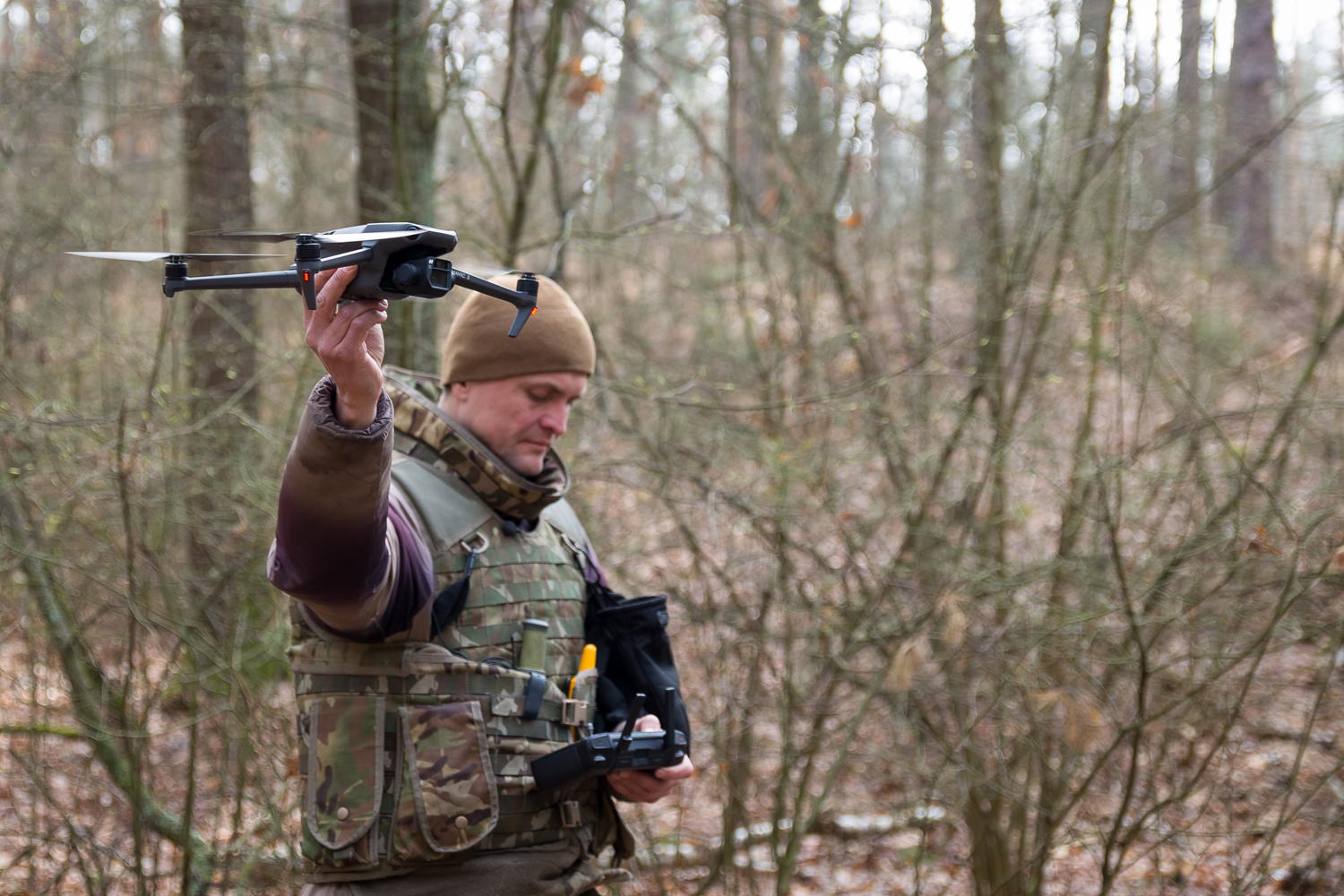
Drones are becoming an indispensable tool for aerial reconnaissance, and Ihor Lutsenko knows this from his own experience. In 2014, he went to the war as a volunteer, where he used a drone. Before the full-scale invasion, he was engaged in aerial photography, taking pictures of nature. Since February 24, 2022, his drone helps him at the front:
“First of all, these are the ‘eyes’ of war. This is enemy detection. It is necessary to see what is happening on the enemy side in order to know what actions to take. Secondly, it is a striking component. Thirdly, aerial reconnaissance also solves humanitarian tasks.”
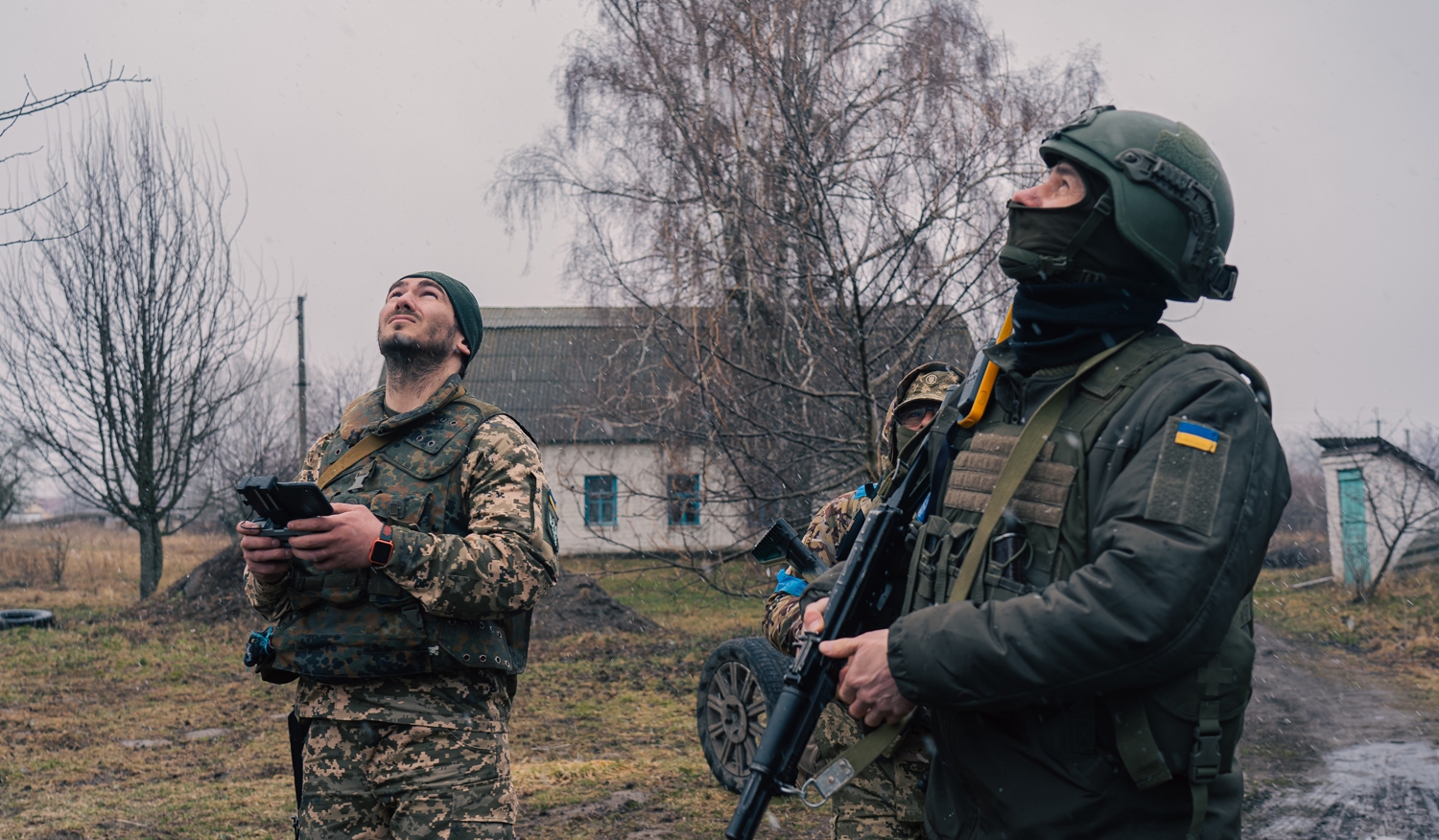
At the beginning of the full-scale invasion, the military and volunteers were going to Chernihiv to take people who needed urgent help out of the regional hospital. One of the participants of the trip, Valeriy Borovyk, an aerial scout and head of the Yatagan drone development company, said that they launched the drone to see if there were Russian subversive reconnaissance groups (SRG) or the Russian military near the humanitarian corridor:
It is very important, when planning a humanitarian mission, to understand where an adversary is, with whom you have agreed or not agreed. Because we see that Russia is not fulfilling its obligations to create a safe passage for the civilian population, therefore it must be controlled.
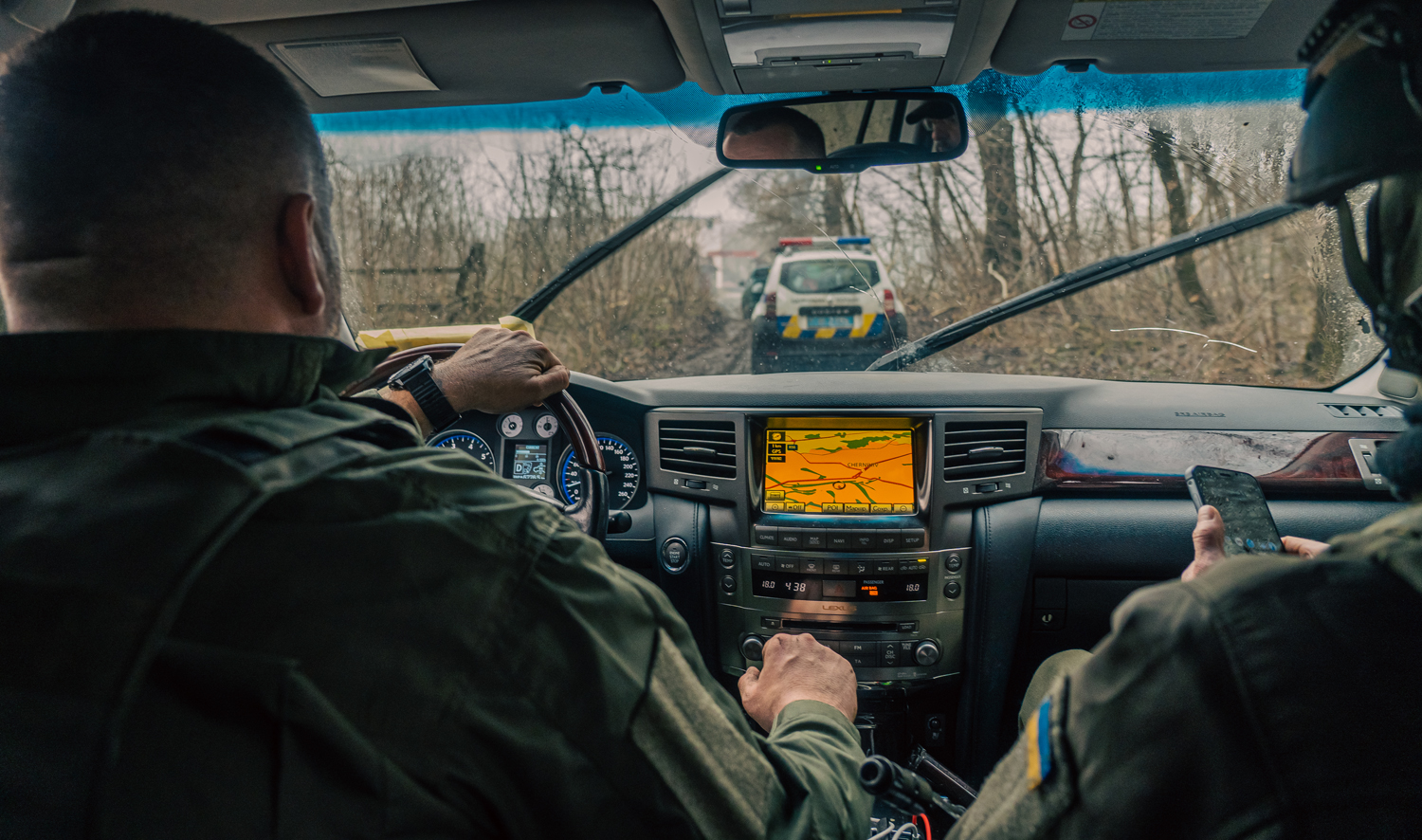
Drones also help at the front. They are necessary for the Armed Forces of Ukraine soldiers for reconnaissance during military actions, recording the dimensions of explosions from enemy missiles, the nature of the destruction of buildings, etc. Orthophotography helps document evidence of crimes committed by the Russian military forces and transfer them to international court. In addition, thanks to the drone, you can avoid the so-called friendly fire, i.e., a fire contact against your own troops, not the enemy’s ones.
Orthophotography
An aerial photograph geometrically corrected.Aerial scout Anastasia Konfederat is currently engaged in orthophotography, and learned how to use a quadcopter at the end of 2014 — within a year she went to the war zone in the east of Ukraine to perform military tasks. In 2022, the community of UAV operators and Anastasia, in particular, share their skills and experience in new types of drones usage, and coordinate the Armed Forces of Ukraine training flights in conditions close to real ones. New trainees can practise the tactics of reconnaissance and sniper cover there, she says:
“Situations are different, if there is a lull, a shift change, for example… The more people who know how to do it (to use a drone – ed.), the more it saves lives. Each drone has its own amount of time to fly, and then it needs to be recharged. The more “birds”, the longer the flight time.
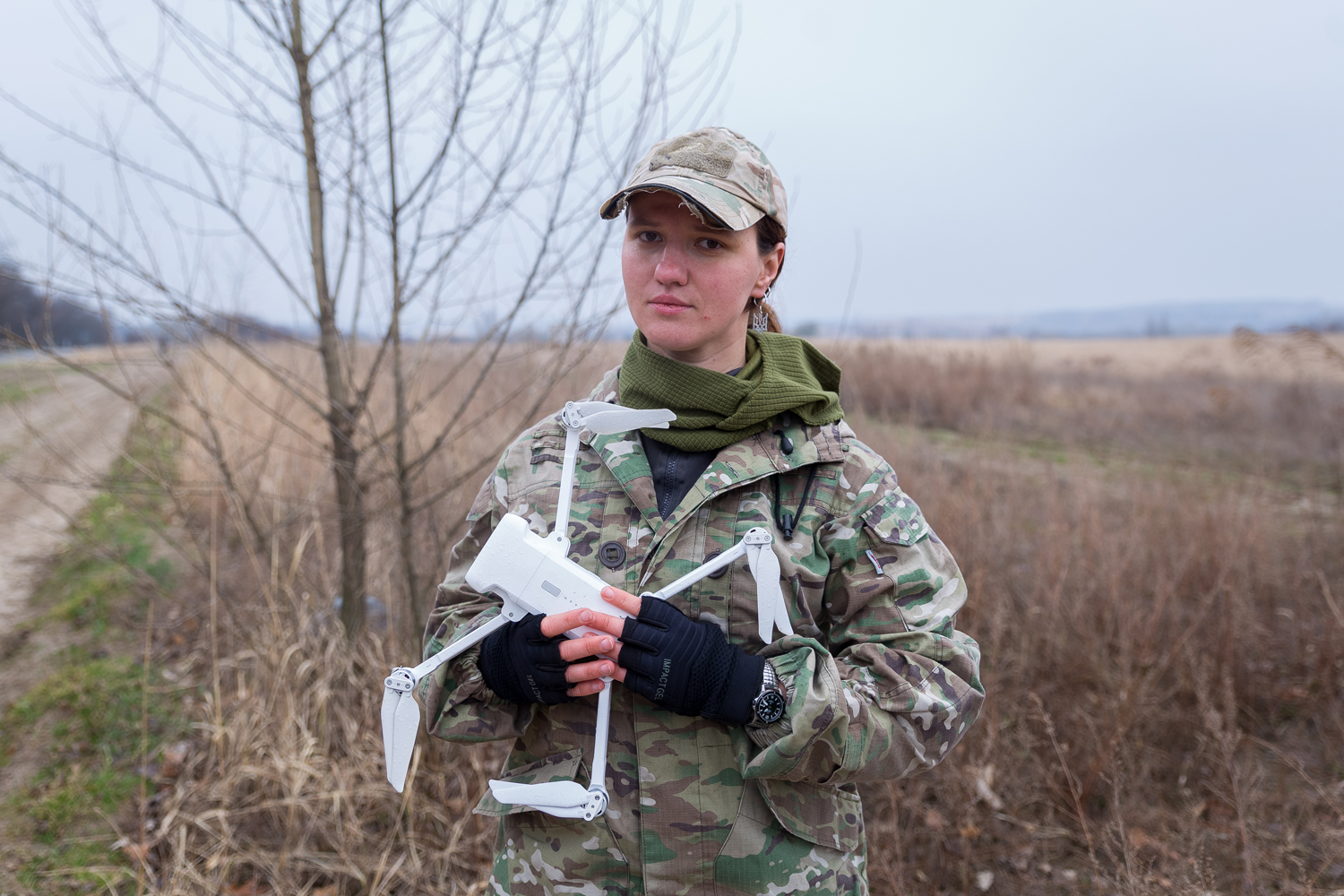
Anastasia encourages those who want to help Ukrainian fighters to buy drones on their own or to donate to charities such as Charity Foundation of Serhiy Prytula, Come Back Alive and Razom for Ukraine:
— We need a weapon that could close the sky, detect enemy equipment, block its operation and destroy it at a safe distance.
To have drones is to save lives and to survive
In 2014, at the beginning of the Russian-Ukrainian war, drones were rare on the battlefield. Currently, Ukraine has the following domestic and foreign unmanned aerial vehicles in service:
Bayraktar ТВ2 is the most famous Turkish drone in Ukraine. Possible time in the air: more than 24 hours.
Maximum speed: up to 220 km/h.
Maximum flight range: 4,000 km.
Cost: a kit (control station and armament) — USD 30–70 million; one drone — USD 1–2.5 million.

Switchblade is an American drone kamikadze, a drone/bomb hybrid that can be controlled at a distance of up to 40 km.
Possible time in the air: up to 40 minutes.
Maximum speed: 160 km/h.
Maximum flight range: 10 km.
Cost: USD 6,000.

Phoenix Ghost is a drone that has been developed by the Americans specially on request of the Ukrainian military. Can take off vertically, equipped with an infrared camera.
Possible time in the air: about 6 hours.
Maximum speed: 160 km/h.
Maximum flight range: 50 km.
Cost: USD 6.5 million.

R18 is a Ukrainian-made octocopter, i.e. a drone equipped with 8 engines, thanks to which it can move quickly through the air and lift heavy ammunition. This design helps the strike drone to take off and land vertically, as well as hover above the enemy.
Possible time in the air: 40 min.
Maximum speed: 43 km/h.
Maximum flight range: 4 km.
Cost: USD 20,000.

“Leleka-100”, “Furiya” and “Valkiriya” are Ukrainian drones. The possible time in the air is up to 3 hours.
Maximum speed: 120 km/h.
Maximum flight range: 30 km.
Cost: USD 15,000.

PD-2 is a Ukrainian drone, the characteristics of which significantly exceed civilian models.
Possible time in the air is about 10 hours.
Maximum speed: 140 km/h.
Maximum flight range: up to 1000 km
Cost: a set (two planes and a car equipped with thermal imaging cameras) — USD 1 million.

DJI and Autel are commercial Chinese UAVs. The Ukrainian military forces most often use Mavic, Maverick, Matrice and Inspire models of these manufacturers.
Possible time in the air: about 30 minutes.
Maximum speed: 72 km/h.
Cost: USD 1.5–5.5 thousand.

Today, in the conditions of a full-scale war, drone usage is a necessary skill just like the ability to search the Internet, drive a car or apply a tourniquet. Moreover, a technological war is going on in Ukraine — it is a confrontation not only of automatic weapons and tanks, but also of the latest military technologies, in particular drones. Maria Berlinska believes that modern wars will be robotic taking into account the Ukrainian experience. She points out that in a country at war most people should be able to launch a drone in order to provide information about potential danger to others and act according to the information received. Also, aerial reconnaissance is important for Ukraine right now, she says:
“We have to fight wisely with intelligence and technologies. It is the only way to win without paying a price so high. Territories are de-occupied, businesses and houses are rebuilt, and people return (from the war. — ed.) only if they are wounded. Everything can be renewed, human life is the only non-renewable resource.”
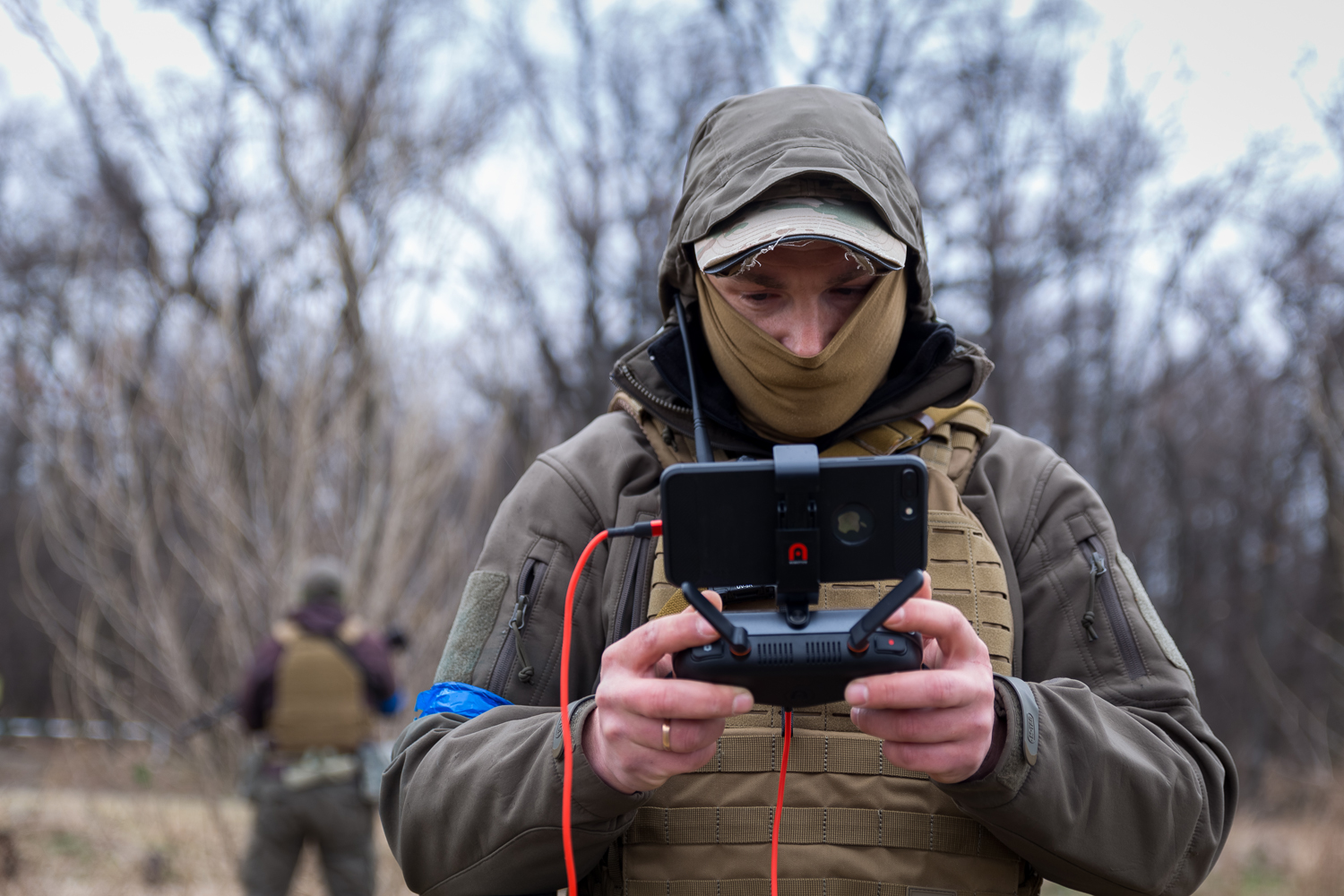
The population of Ukrainians is 41 million (as of the beginning of 2022), and Russians are 145 million. Ukraine does not have as many “living resources” as the enemy has. And even if it did, it still wouldn’t use people as “cannon fodder” in the war. To help, you can reach out to volunteers who buy drones or try purchasing them yourself. This is the most powerful investment in saving human life, Maria says:
“I understand that everyone wants to invest in medical help, because it saves lives. Everyone wants to invest in armoured vehicles, because they protect a person’s heart. However, people don’t think about the fact that all this is solving is the consequence — when the shot has already been fired, when it has already ‘arrived’. Instead, aerial reconnaissance solves the cause.”
“Gentleman’s kit” of aerial reconnaissance
Not only is a drone needed for aerial reconnaissance, but a whole kit, says Maria Berlinska:
“When I talk about hardware (material and technical support. — ed.), it includes drones, Starlinks, tablets, and power banks — this is a gentleman’s kit for aerial reconnaissance. Software are Terminal, Delta, MilChat, UKROP and other management programmes. And the third component is training.”
Starlink
Global satellite system for access to unlimited Internet in hard-to-reach corners of the Earth.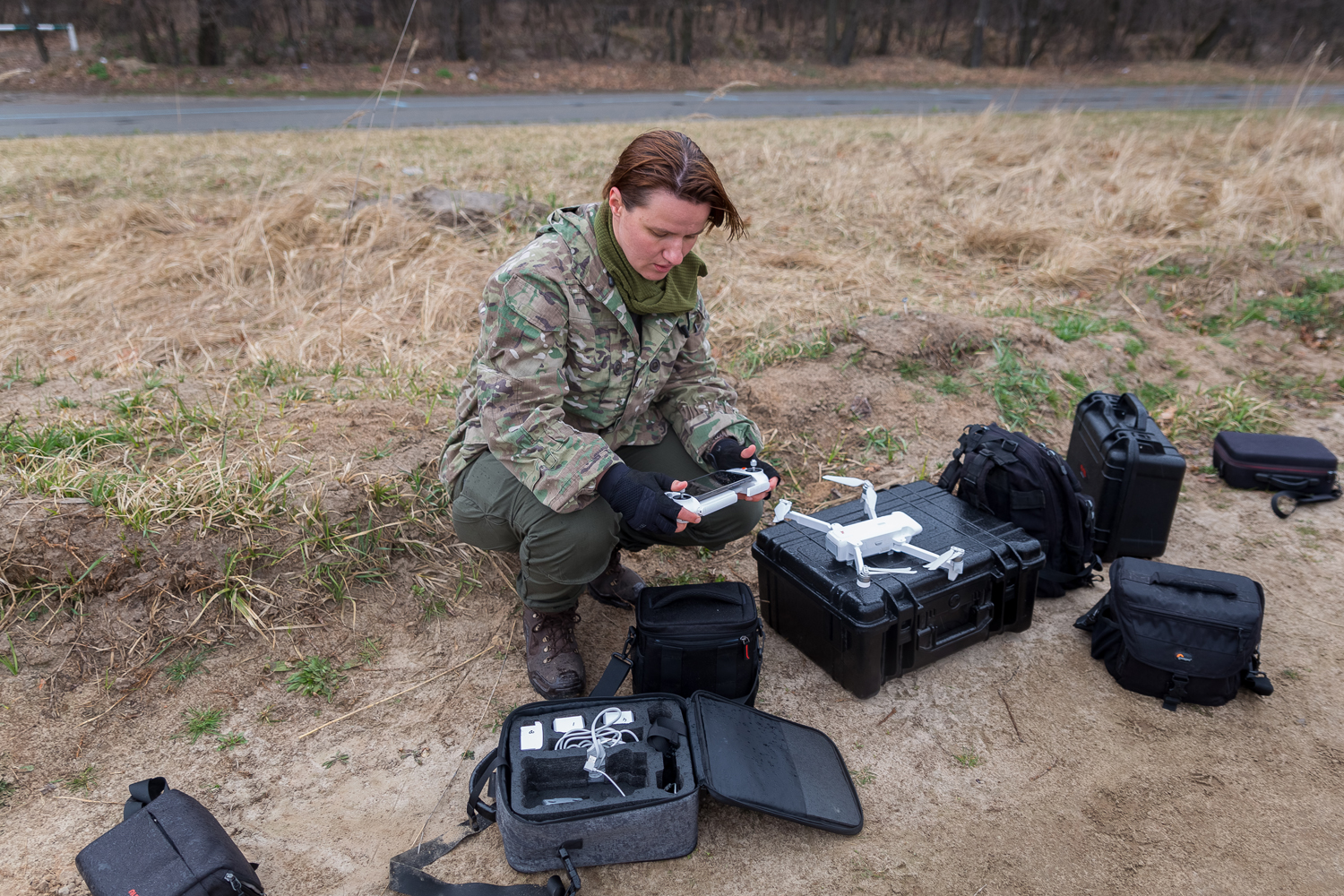
For the third component, which is training, Razom for Ukraine, the “Aerial Intelligence Support Center”, as well as a team of aerial intelligence officers, engineers and volunteers with the support of PROTECT (a Canadian-funded programme that supports institutions and agencies in the security and defence sector of Ukraine) developed a project to train military drone operators. Courses can be completed online in closed mode on the Prometheus platform. The video lectures, assignments, and forum are available at any time, but only the military can get a link to the course.
In one of the courses, “Application of technology in conditions of war”, you can learn the basics of safe control of drones, the rules of using radio communication systems and the most common digital software for free. “Military application of UAVs” is a separate part of this course, which is devoted to the principles of network-centric warfare. Each fighter is considered an intelligent combat unit who is capable of collecting data, analysing it, and quickly reacting to new circumstances. Thanks to this, an information advantage over the enemy appears and the speed of elimination of enemy targets increases.
Maria Berlinska believes that theoretical training on online platforms is the only fastest way to teach a large number of people, in particular, how to control drones. That is why the team created the project, to provide basic knowledge in all areas of interaction of fighters with “technological birds” in order to reduce the risk of harming themselves and others during the first attempts to use the equipment at the forefront.
Also, drones are an expensive tool of war, and the cost of operator error is quite high. The cost per unit or a set with all applications varies from USD 1.5 thousand to USD 70 million. Therefore, drones should only be operated by those who have completed training and had practical experience.
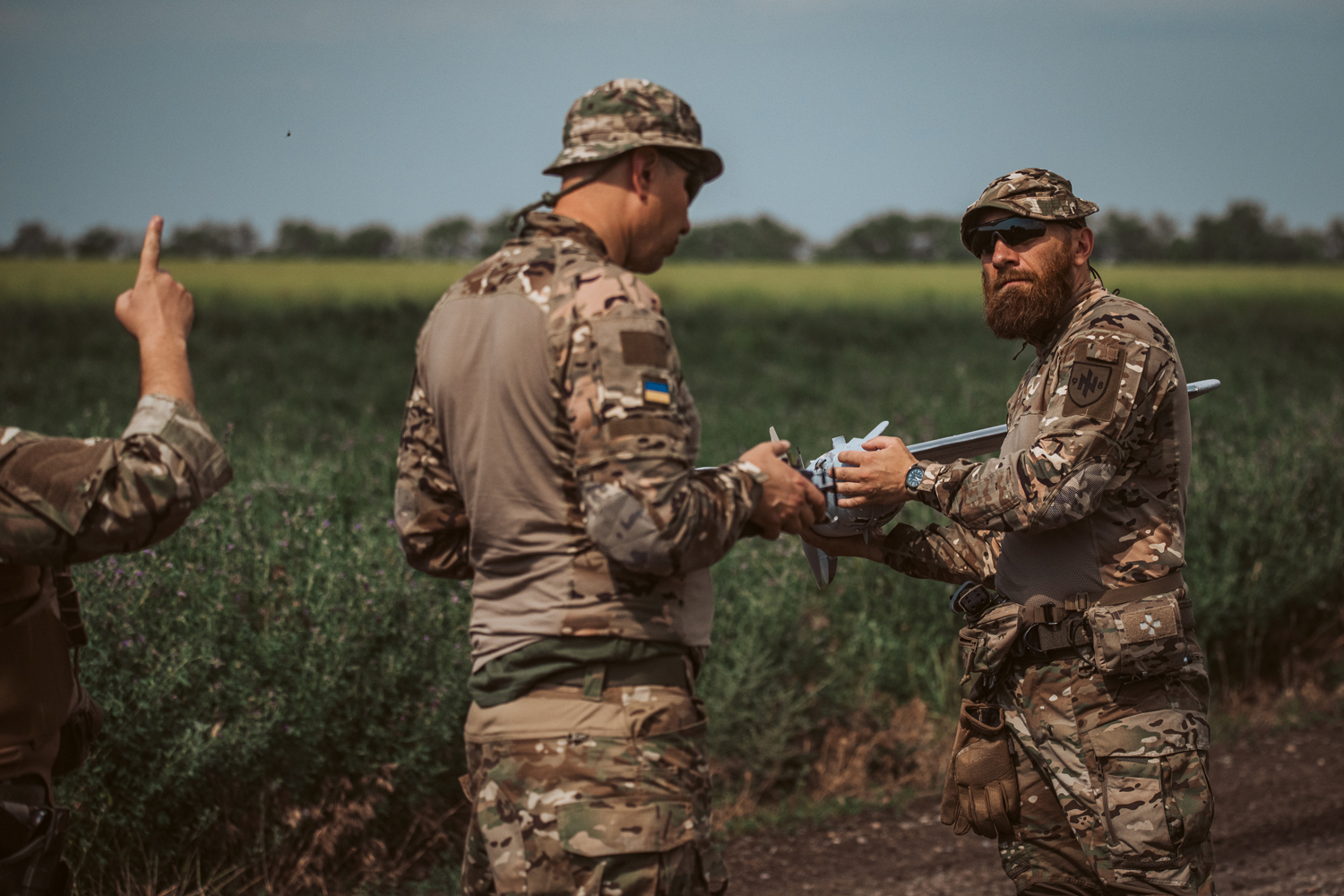
The main thing that Ukrainians need now to win is a tool. And the rest, as Maria Berlinska believes, are already there: faith, will, and boundless heroism.
“I know that there is something very important in our souls — it is light. I know that all of us are Ukrainian by choice. And the Ukrainians will win, and the whole free world will win.”

